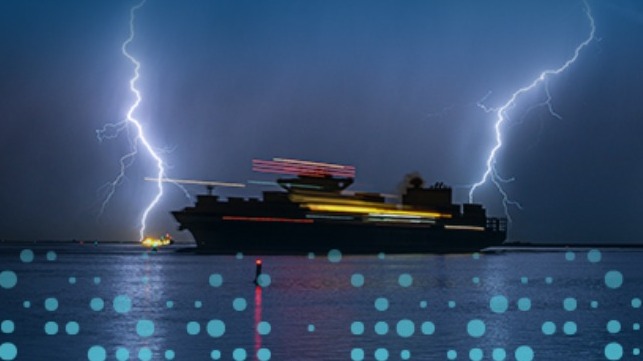Master Mariners Deliver Experience for Optimized Weather Routing

Optimized weather routing is the de facto approach for many shipping companies to manage costs, meet key performance indicators, and maintain safety.
Yet, while many shipping companies are already familiar with the benefits of optimized weather routing, they could be missing out on the additional value if they're not consulting master mariners for routing advice. In particular, it's in the marginal, where the support of ex-seafarers comes into its own. Routing decisions during severe weather are usually clear cut: vessels need to avoid conditions that put crew or cargo at risk.
But in the margins, it's not always obvious which route is the most effective. Typically, route optimization does not come down to one specific moment. As Remko Vermeer, master mariner at DTN, explains, "it's a continuous process. All the little improvements that we try to make on routing vessels are all small optimizations. But altogether, they add up to large, significant savings which should make it worth considering having your vessels routed with the support of master mariners."
Interpreting the weather data
Constant weather monitoring events and understanding the long-term trends is highly beneficial for weather routing guidance - particularly during changeable seasons, like the North Atlantic in Winter.
Vermeer explains that "having the long-term perspective helps communicate the likely impact of changeable conditions, for example in wintertime in the northern hemisphere." Detailed knowledge then helps master mariners interpret the data to provide valuable routing advice:
"I think our experience in routing really contributes,” says Vermeer. “We can explain to clients why they should deviate from the traditional routes, which are usually based on climatic averages".
Responding to the latest weather data
Routing guidance can change during a voyage, as short-term forecasts are more accurate than long-term forecasts.
A typical scenario involving a nine-day forecast might see master mariners consider the first five days relatively reliable from the forecast data and the next four to be increasingly changeable. As new short-term forecasts become available, master mariners will review and, if required, update the routing guidance.
To solve the unpredictability dilemma with longer-term forecasts, Vermeer explains masters must make assumptions beyond these nine days. "We know that the optimum route calculation that has come from our software will use average climatic data, which can greatly influence the entire route. As short-term forecast data becomes available, we have to review the route, based on our expertise".
Advising on the most appropriate route
In theory, it may seem logical to always route vessels the shortest distance between two points. But longer routes that avoid adverse conditions can help reduce fuel consumption and therefore reduce costs.
A master mariner will calculate the optimum route for a particular vessel on a specific voyage. It's where the in-depth knowledge of the seas provides a real advantage. For example, conditions across the Pacific between the Panama Canal and Asia mean that the shortest route is not always the way to go, and, going south along a longer route improves the arrival time and the economics of the voyage.
Safety remains the priority
No matter the season or the client-specific scenario, safety is always a top priority. The insight from master mariners enables ships to take alternative routes before conditions pose threats to vessel performance or become a safety risk.
Understandably, hurricanes and tropical depressions significantly impact the shipping routes in terms of safety and efficiency. But vessels can usually route around severe weather. It's arguably the less severe but still challenging conditions that pose the more significant threat.
As Vermeer explains, “in the winter, we're not affected by hurricanes in the northern hemisphere, it's not an issue. But wintertime comes with its own challenges, with a continuous flow of deep depressions and large areas of stormy weather that can affect many vessels."
A hurricane poses a considerable threat if a vessel ends up in the storm. But as Vermeer stresses, the extreme severity of a hurricane means ships will route around and give the weather front a wide berth. The real challenge comes when balancing safety and efficiency during marginal weather that is not easy to predict and avoid - and this is where advice from an experienced master mariner makes the difference.
Final decisions remain with the client
Of course, once master mariners communicate the data and guidance, it's up to the client to decide how they would like to route their vessel.
It's not unusual for shipping companies to always want the shortest and fastest route. Vermeer explains that this is perfectly fine in its simplicity. However, it's vital for mariners to always ensure vessels remain within their safety limits:
"On one hand, we represent our clients which want us to deliver efficiently as much as possible,” he says. “On the other hand, we are serving advice to ship captains, which has a high priority on keeping the vessel safe and out of harm's way".
Daily updates mean clients always have the latest insight available to inform routing decisions. The personalized guidance from Master Mariners is one hand to help captains and crew to anticipate and respond to the conditions ahead.
To learn how you can utilize the expertise of master mariners and benefit from their experience and first-hand knowledge, click here.
This content is sponsored by DTN.
The opinions expressed herein are the author's and not necessarily those of The Maritime Executive.
